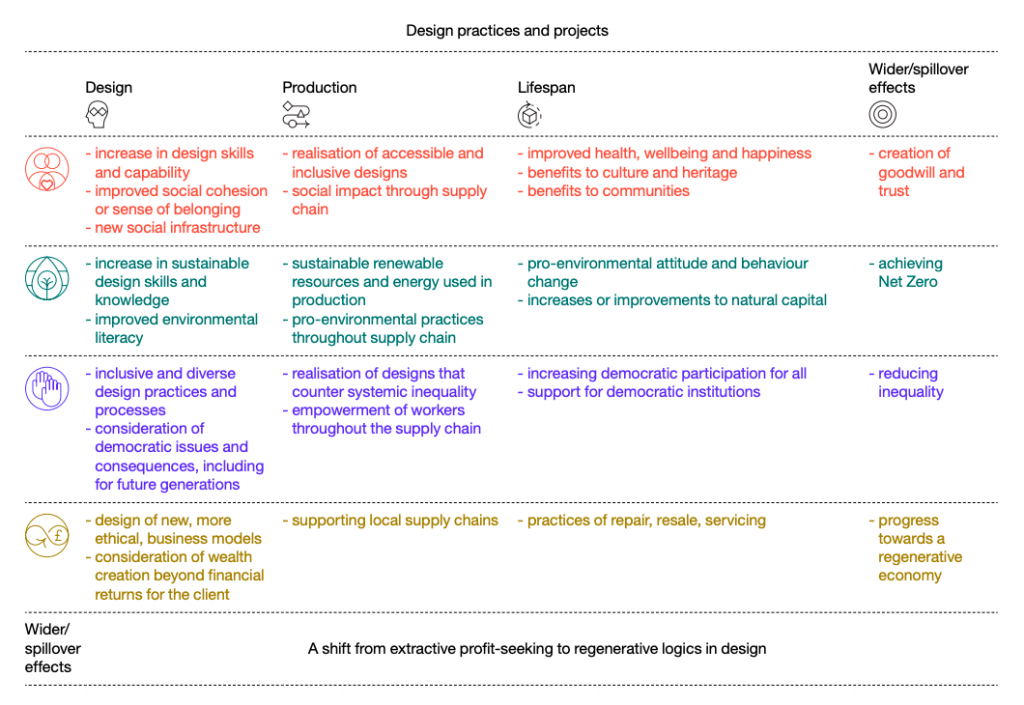Design Council has been the UK’s national strategic advisor on design for many decades now. Design Economy is their flagship research that they run as a three-year cycle to find the current and future value of design. Recently, their team have proposed a design value framework for designers and commissioners to identify and assess the wider social, environmental and democratic impacts of their work. (See the design value framework, by Design Council’s flagship research.)
They plan to use the design value framework in two ways as the framework document says:
- “As part of our Design Economy research, we will use it to measure the aggregate value of social, cultural, environmental and financial capital generated by the design industry.”
- “We will promote it as a tool to be used by anyone involved in design (designers and commissioners) to plan and assess their work and practice, including our own programmes at Design Council.”
The design value framework talks about the design practices’ adoption or how the orgs respond with time, for the four key factors—sociocultural, environment, democratic, and financial-economic.

While I understand the objective of this design value framework and how it talks about the design for the four key identified concerns or subjects for its impact, I am not sure how this framework helps the organizations map their investments or understanding of design across these four subjects, cohesively, or for the right or required balance among the four subjects.
A majority of the organizations do not have a clear understanding or a process to map their product or service design, business design, and organization design. For example some of them might be doing very well in their products and customer service with a huge growth in profits and in reputation too, but they might not be careful for the carbon footprints or for the societal impact. Likewise we see organizations who encourage and comply with climate and regenerative economy such as by using organic fabric in the ecommerce category, their selling experience and digital footprints’ experience might be quite ordinary.
So, where do we see the design as a whole? You can download the design value framework here. I guess this framework is foundational to build the “design sense” for this whole. Some day.
